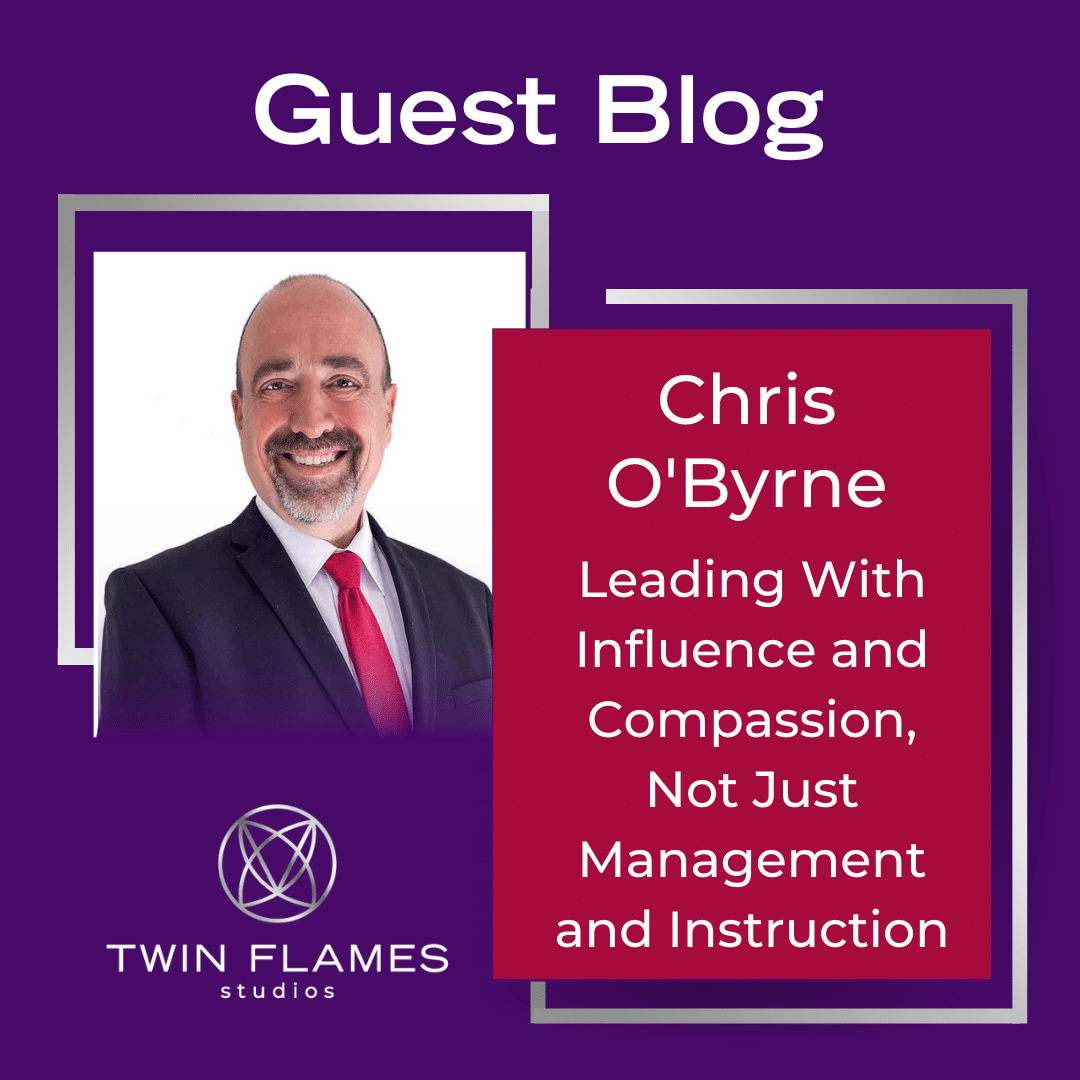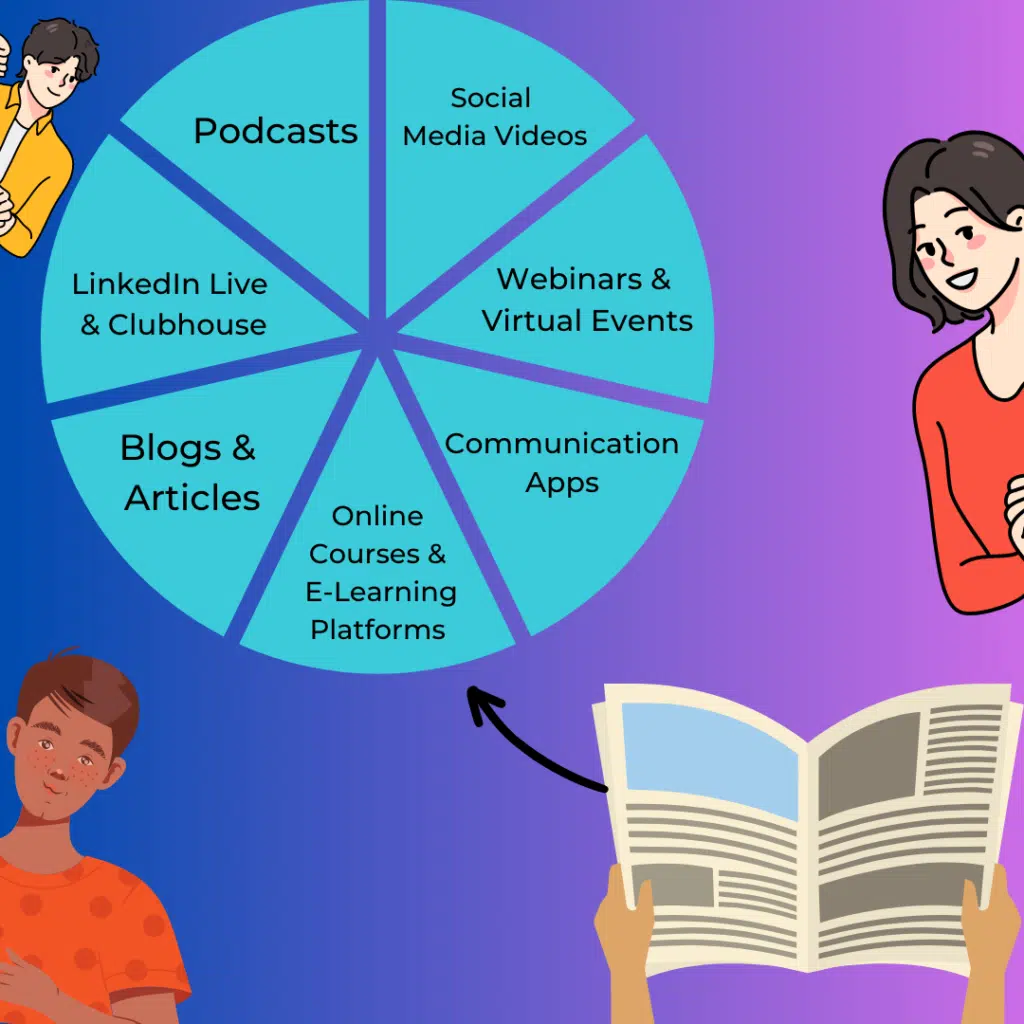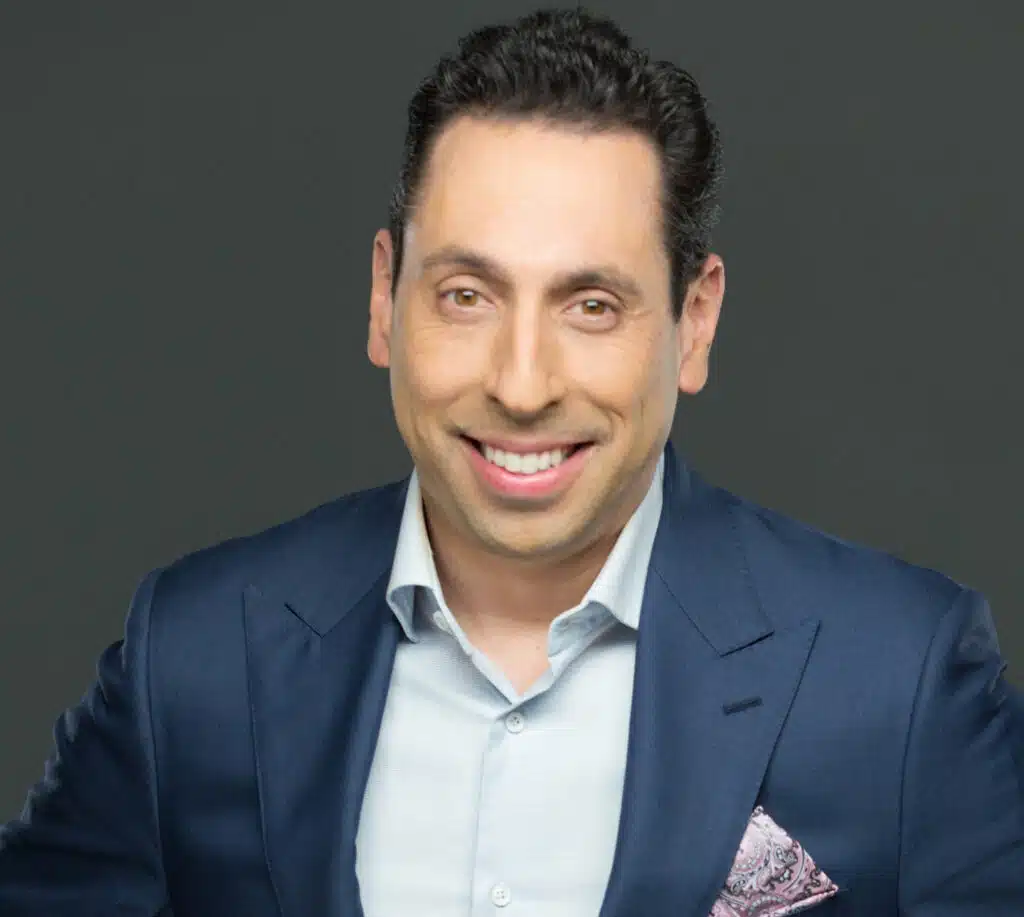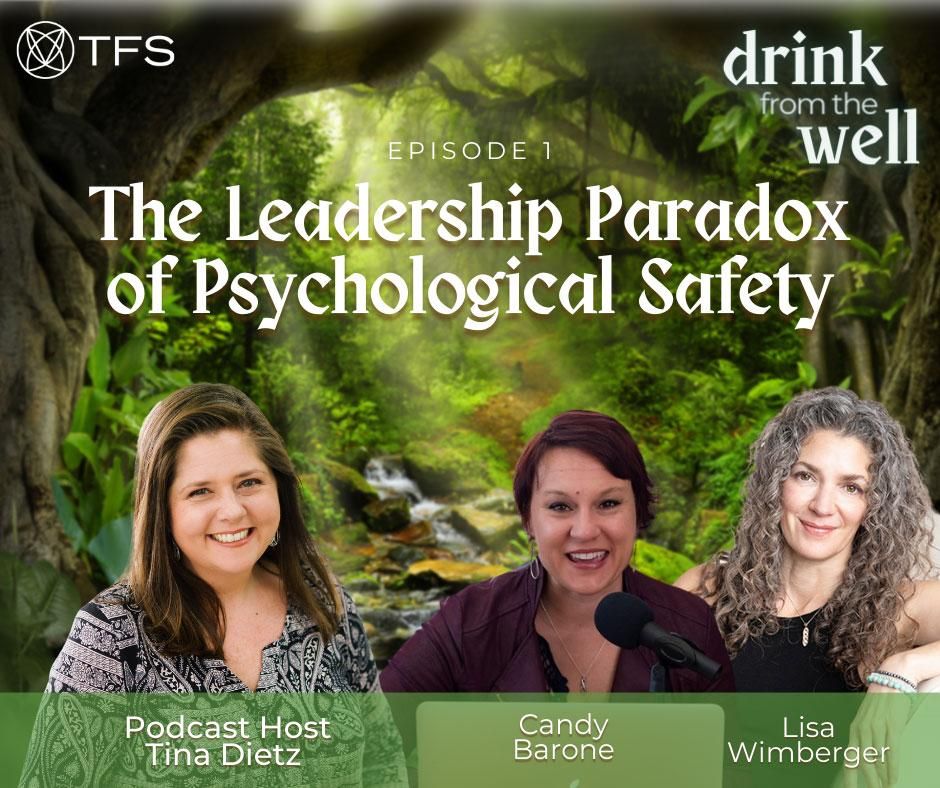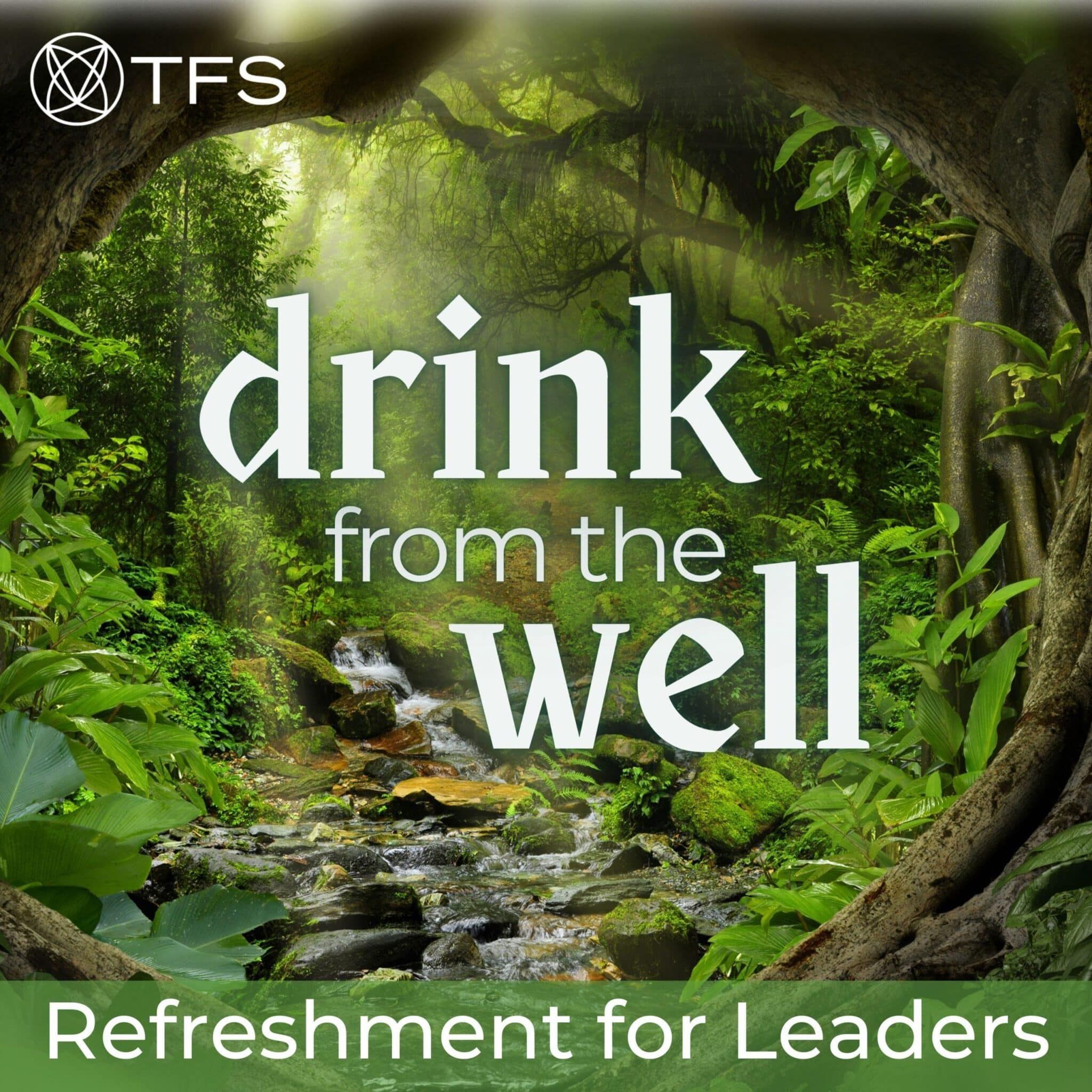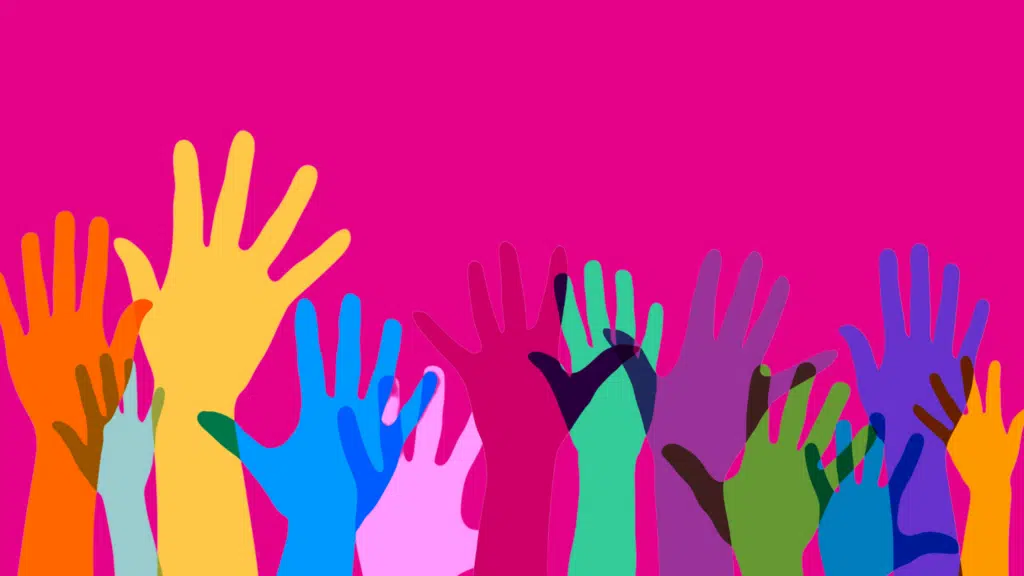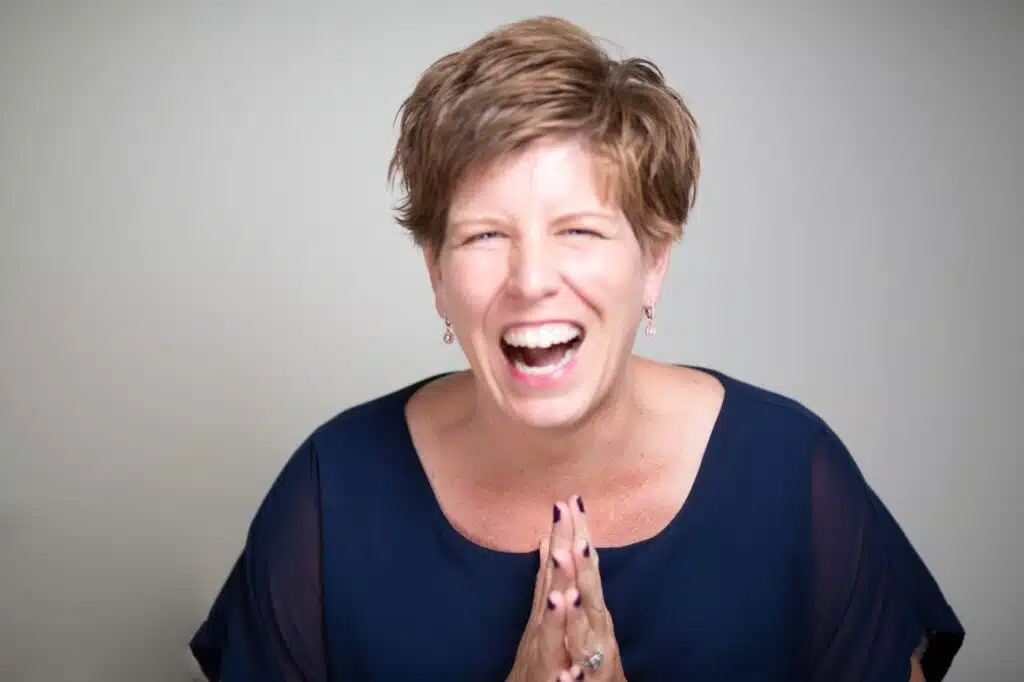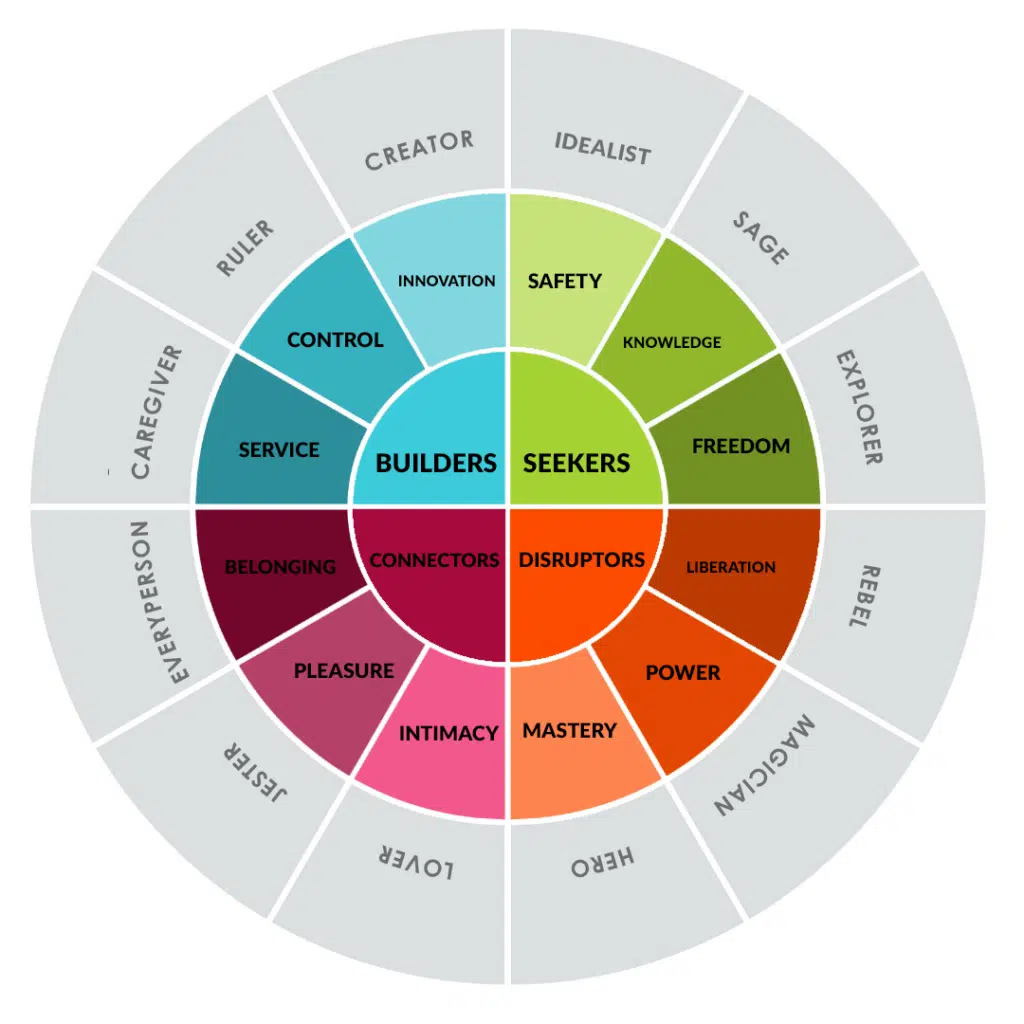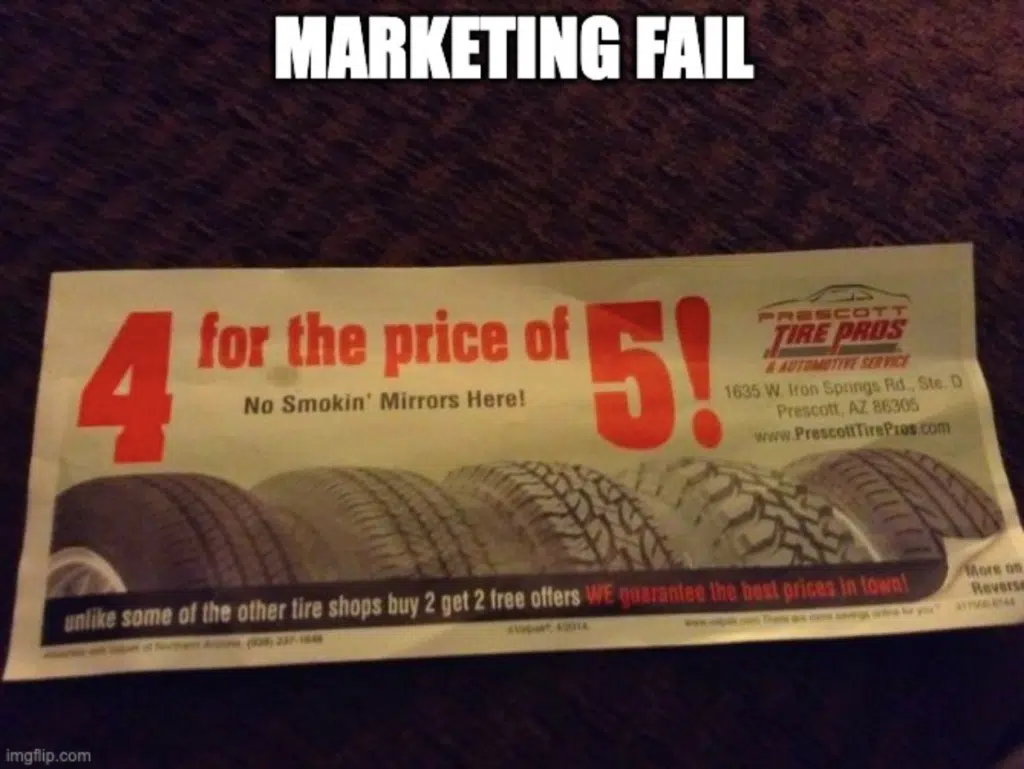Tina Dietz
Hello everyone and welcome. I'm Tina Dietz, and this is Drink From The Well. Today's topic: the paradox of leadership and psychological safety. For the first time in decades, we're seeing the pendulum swing in the world of business and industry from a focus on developing hard skills, like technical training, to soft skills, which I've always hated that term – let's call them something more accurate. People skills, human skills, what we actually need to communicate and thrive together. But one of the big reasons in this shift is the demand by workers and the absolute pile of mounting research and data related to something called psychological safety.
Voice Over (Audio Montage)
“The importance of psychological safety”
“It’s amazing how much attention is now being spent on psychological safety”
“Google built its culture on this idea of psychological safety”
“I call these special workplaces ones that have psychological safety”
“Building psychological safety on a team”
Tina Dietz
One of the basic tenets of psychology is mired in Eric Erickson's work from the mid-1900s, where he theorized that all humans go through a series of eight psychosocial stages. In the first stage a child goes through, and that's about birth to 18 months old or so, is determining whether the world that they live in is one that they can trust, and if they can indeed feel safe in that world. Another basic premise common to psychology is Maslow's hierarchy of needs. And you may have seen Maslow's famous pyramid in a psych 101 class. This construct shows safety as a basic human need only secondary to food, air, water and shelter. So, today, we're exploring what happens when leaders are being asked to provide psychological safety for their teams, when they might not even feel psychologically safe themselves. We'll also be looking at the impacts of what happens when people don't feel safe in the workplace, and, of course, what we can do about it to move forward, to innovate and to help each other out. Today, we are joined by two fantastic experts. Lisa Wimberger is the founder of the Neurosculpting Institute and the co-founder of the NeuroPraxis app. She has a credible background educationally in neuroscience, visual perception, neurobiology and education, and is the author of seven books on neuroplasticity and stress management. She owns multiple companies, has over 60 international franchises and teaches in audiences ranging from corporate leaders to the FBI and the Secret Service. Candy Barone is also joining us today, and she is the CEO and founder of You Empowered Strong, a leadership development expert, a trainer and executive coach, and she is also a bestselling author and an international speaker. Candy’s also a Vistage executive chair and CEO peer advisory group facilitator and a member of the Forbes Coaching Council. She has received incredible numbers of awards in leadership. Candy has also been showcased on CNN, the US News and World Report, South by Southwest, Fast Company and many, many other publications. So, I am honored to have both of you on the show today. Lisa, thank you for joining us.
Lisa Wimberger
It's great to be here.
Tina Dietz
And Candy, thank you as well.
Candy Barone
It's my honor. Thank you for having me.
Tina Dietz
Yeah, so, we really wanted to cover 360 everything having to do with psychological safety from giving leaders a basis to work from, because this keeps coming up in the news. It's coming up all over business. There's studies being run by Google and Gallup, Workhuman. The research really is mounting like crazy. But I think we really need to first, take a look at what is our working definition of psychological safety for our conversation today. And Lisa, I really love the one that you use. And I was wondering if you would share that with us.
Lisa Wimberger
Yeah. For me, the way I like to look at it is psychological safety being our ability to regulate, in the moment, based on appropriate environmental, contextual requirements outside of our old reactive patterns, and really orienting towards listening, understanding and responding. It doesn't mean I always feel safe. It means I know how to guide myself back to some level of homeostasis so I can function in present time appropriately.
Tina Dietz
So this idea that we can have the capacity to move ourselves towards regulation, no matter what's going on around us.
Lisa Wimberger
Absolutely. We're not supposed to be stuck in regulation. We're supposed to always be able to orient towards it. That's what a mammalian nervous system is best at.
Tina Dietz
And we do have to keep in mind that we are mammals, and we are dealing with this mammalian nervous system. We do lose that in our day-to-day work. You probably see a lot of that, right?
Lisa Wimberger
Yeah, we forget we're mammals. And so for all of you listening, I want to just sort of couch everything I'm going to say. When you feel yourself respond in this dialogue we're having with the, “Oh my God, that's me, and I'm broken.” And, “Oh, no, I've been doing it all wrong,” I don't want you to think that that's a bad thing. I want you to think, “Yay! I just saw my growth opportunity,” to be able to identify that. As mammals, we're all imperfect creatures whose best capacity is to grow from our awareness of dysregulation. So if you're one of those, “Oh, no, I'm screwed up because this is me,” you're ahead of the game.
Tina Dietz
Yeah, 100% cheer for self-awareness for sure, right? Now, Candy, you’re really known in your – in the leadership circles for someone who shows people how to have uncomfortable conversations. So, what do you think is kind of the first rule for us entering into a conversation like this that might have leaders feel a little bit uncomfortable with approaching even the idea of, “How the hell am I going to create psychological safety for my team when I don't feel comfortable myself?”
Candy Barone
Yeah, and I love what Lisa said, both in terms of the definition around what psychological safety is and talking about what happens when we feel that dysregulation, because one of the things that I talk to leaders about is the fact that in order to have the, what I call, the courageous connected conversations, we need the ability to create safe containers where people can be free to feel seen, heard, valued, loved and respected without fear of repercussion or judgment. And that is easy to say and very difficult when leaders have not been given the opportunity to get the- and I'm going to use the- human skills required to have the level of emotional intelligence and capacity to hold that space, especially when they haven't been able to create it for themselves. And so, there is an aspect of a couple things that I think is really important. One is the ability to listen for understanding and vulnerability. Vulnerability still is such a dirty word in many business environments and seen as a weakness rather than, truly, the most critical aspect of an organization.
Tina Dietz
That's absolutely perfect. And I heard you both talk about one of my favorite topics, which is engaging the superpower of curiosity. And because curiosity does live in a different part of the brain than other emotions, a lot of folks don't realize that it's a great way to interrupt your patterning of going down a stress rabbit hole or a situation where you might be feeling incredibly vulnerable. I wear a lot of emotions on my sleeve. It's part of what makes me me. And in leading my team, sometimes in having those difficult conversations, I have to create all of this space for me to have those large feelings inside of me both simultaneously without vomiting all over my team, but also give myself the own space and grace that I could very easily get angry with myself about being emotional, which makes me more emotional, which makes me angrier. But leaving room for all of that space allows us to move through these challenges so much more quickly. So, we just jumped right into the thick of what it's like to experience all of these feelings and all of these emotions. And on that note, I just want to back up for just a moment, create a little context. I'm so excited about this particular topic, but I wanted to share a little bit about some of the things about the two of you, why I asked you to be here today and what makes you such incredible experts around this topic. Lisa, something that I know about you that really intrigues me was that when you were 15, apparently you were struck by lightning.
Lisa Wimberger
Yes.
Tina Dietz
And that had a real impact on you going down this path and studying the mammalian nervous system and the psychology around it.
Lisa Wimberger
Yeah, it screwed me up big time. I'll tell you, there's nothing glorious about being hit by lightning. I was hit in the base of the spine on my birthday and developed a seizure disorder, which was undiagnosed for many years, but it was getting progressively worse. So, I thought I was fainting. I was actually having grand mal seizures, I was flatlining, I was being resuscitated, I was ending up in the ER. And this got worse and worse. And I finally got a handle on it 15 years ago, and I was a single mom at the time. And I was like, “Nope, can't do this, can't leave my kid as an orphan.” So, I was studying neuroscience because I needed help and Western medicine couldn't give it to me. I wasn't epileptic, there were no meds. They said, “You just have to deal with this.” That was my very self-serving reason for studying neuroscience. Found the keys to the system to regulate, and that set me on the path of, “How can I teach other people how to regulate?” Because the core of my seizure disorder was psychological threat. It was a stress response.
Tina Dietz
Yes.
Lisa Wimberger
Right. So, the fact that I didn't have psychological safety with all of my education background and my 30 plus years of meditation – yes, I've been meditating regularly since I was 12 – did not provide me psychological safety. I had to work for that. I had to identify, learn, apply, integrate, digest, metabolize and continue. And that was provided to me by neuro-scientifically understanding what a mammalian system needs.
Tina Dietz
What's so beautiful here is that, I know that, Candy, your path towards working with leaders and regulating yourself also started fairly early in life with a desire to create more psychological safety for yourself. And can you speak to that?
Candy Barone
Yeah, I would say that early on, there was a lot of fight, flight, freeze response due to just the abuse that I was surrounded with when it came to my dad, and a lot more psychological and emotional abuse, which then transcended into 20 years of a corporate career, which at the age of 35, put me in the hospital. And what happened was, I was in a space of where, I call the over syndrome, which is I was over-functioning, over-performing to the point where I was so over exhausted, over frustrated, over burned out, over beyond, my entire identity was attached to my over as a form of way to create safety for myself that it literally created a mass, a pain in my chest that doubled me over. So, I remember going to see – because I didn’t even have time to go see my doctor, even though I was having debilitating pain and space where I wasn't able to catch my breath. So, as I was sitting in the waiting room when I probably should have gone to the ER, I remember having a conversation in my brain that went something like, “Candy, when was the last time you slept?” And this other piece of my brain went, “I'm not talking about when you passed out at your computer, when you had six martinis to take the edge off. When was the last time you had a real quality night's sleep?” I couldn't recall one in the last three weeks. And the moment I acknowledged that for myself, the wheels came off. Because then a barrage of questions, “Oh my God, my doctor is going to ask why I think I'm having a heart attack. Is it because of the binge eating or the alcohol, or this? Oh my God, I think I went shopping last week. And what did I buy at Ann Taylor? There's still a bag sitting in my hall.” And like my brain just took over, and absolutely, I was almost in the fetal position by the time the doctor came out to call me into his office. After a battery of CTs, MRIs, tests, colonoscopy, endoscopy, you name it, it finally came back that I had created – and I say that very deliberately – I created and manifested a mass in my chest that tripped a sliding hiatal hernia I didn't even know I had. And I manifested it because I had spent 20 years, well, actually, at that point, about 35, doing what I call the shallow, above the neck breathing, which was the holding my breath because of the stress that was constantly activated around me or the hyperventilating, which eventually caused all of that energy to trap in my body.
Tina Dietz
And this is such a great example of – one of my questions has been, “How do you know you're not in a space of psychological safety?” That is a clear example. And there's all gradations of this. And my own journey with becoming a therapist, and then working with people in their businesses, working with teenagers, also came out of the sense of, I was never safe as a child, I was always at risk, one way or another, no matter where I turned, didn't have this like safe base that I could count on. And so, I had to create that for myself as an adult later on. So, this is a really common story. So, then we're all going into workplaces, carrying a lot of this with us. And no matter how much work we do, we're still dealing with being around other humans dealing with this mammalian nervous system. And this is something that out of Lisa's work, I'm familiar with, the idea of we go into a state of midbrain dominance when we're not in a space of psychological safety. So Lisa, could you tell us about midbrain dominance?
Lisa Wimberger
Yeah, and Candy, what an amazing, hit the wall moment for you where it all got clear. And I just want to say, who better to teach people about creating psychological safety than those of us who had to find it and work for it and can give the ins and outs of how to do that. I want the people who've been in the trenches. You may not know you don't feel safe. But here's some things you can know. You can know if you have constipation or diarrhea. You can know if you're gaining weight inappropriately, or excessively, rapidly losing weight. You can know if you're breathing by inquiring. You can know if you're profusely sweating at all the wrong times. You can know if you have terrible circulation. You can know if you have inability to concentrate. You can know if you have dry throat, dry eyes, dry orifices. You can know these things. These are key indicators of dysregulation, that dysregulation may come from top-down, your perception of psychological safety. They may come from bottom-up environmental, experiential things you're feeling that then get translated as a psychological threat. Either way, you can know you're dysregulated far sooner than hitting the wall like I did and like Candy did, right? So, that's the first thing. But what happens in a situation like mine or Candy’s is that you are in fight, flee, freeze in order to function or in order to avoid the pain, right? That's a mammalian spectrum of responses. And we all have that. And every one of us here listening has had those experiences. But any of those will put you either in your midbrain dominantly as your neural functioning, or even more primitive, into your brainstem. And in that arousal and adrenaline and cortisol, you actually have anesthetized your body in a way so you can produce. So that's midbrain. Then you get to critical mass, and you go into shutdown. And that's the holding the breath part. And that means midbrain no longer can take it, it is now your brainstem running the show. And that's going to cause the holding the breath, the freeze, the immobility and the complete and utter shutdown. Some of us don't progress in that fashion. Some of us skip fight, flee, go right to freeze. I was freeze. So, now midbrain and brainstem are very efficiently taught and very amazing students, that they learn that they govern the show because it protects you. And the part of your brain that's supposed to be creating psychological safety for yourself, and then for others, the part of the brain that makes us all great leaders on paper, right, the ability to get our teams functioning, the ability to create safety, the ability to be innovative and compassionate and empathic and thinking and listening, and all of that requires prefrontal cortex resilience and activity, which is inhibited neurologically when we are in midbrain and brainstem dominance, a part of the brain we have starved, a part of the brain we have weakened.
Tina Dietz
And so, when we're in this part of our brain, in the center of the brain and the brain stem, that's where we start to see these reports from, say, the Gallup study, that over 60% of employees are reporting that they're experiencing some form of burnout. And that means not just stress, but where they're actually starting to shut down and can’t access things. So, we're all still creating and doing and managing in spite of all this, which really says a lot about how resilient human beings really, really are. It is quite incredible what is possible, even in the face of all of this stress. I know for myself, one of my key indicators that I've slipped into the center of my brain instead of my prefrontal cortex is those accelerated thought processes. I get hyper vigilant or I start running scenarios. And I'm like, “Well, what if I did this? Or what if I did that? Or what if I do that?” and it just starts to feel way too fast. So, that is a key indicator that I've seen in clients and myself for years. I think we see that a lot in teams and companies. So, turning our attention to helping leaders identify what's happening in their culture that might be blocking psychological safety, Candy, you talk sometimes about something called sacred cows as one of the three most common challenges in company cultures that block psychological safety. What do you mean by sacred cows?
Candy Barone
Yeah, I mean two things. And I need to preface this because it connects to what you and Lisa just said around resiliency. And this goes into sacred cows. We think about resiliency, oftentimes, in corporations and organizations as being the ability to bounce back. And one of the ways I try to simplify this for people is I talk about resiliency being this space in between reaction and response. And I say that because, when we look at the sacred cows, and we talk about some of that resiliency and how it plays in, oftentimes, I see sacred cows showing up in one of two spaces. One is that person that is a trigger for that psychological unsafety, because they are someone who has been a legacy team member, they have been there 30 some years, and people say, “That's just Bob,” and because Bob doesn't have the same expectations to show up and regulate, that there are excuses made over and over again around why Bob gets to create these unsafe spaces and that everybody should suck it up and just move on. So, there's one side of the sacred cow that says, “Just bounce back, just get over it. Just trust that’s Bob.” And we put that resiliency on people instead of the ownership where it belongs. The other side of the sacred cow is for those leaders that are deeply empathetic, sometimes sympathetic, and they are two different things, but they love their people. And so, they oftentimes will see potential in people that either don't see it in themselves or have capacity to be the person they want. I see Lisa pointing to herself. And so, we create a sacred cow because we try to save somebody who's not our responsibility or our job to save. And what happens is that in and of itself creates more of that unsafe psychological space. And they don't even realize the energy they're putting into that. So those two sacred cows are dangerous in an organization in my perspective.
Tina Dietz
That's definitely dangerous. Do you run into situations where leaders even question that psychological safety is even, quote unquote, a thing?
Candy Barone
Yeah. That is one of the biggest push backs, where leaders are like, “Oh, that woo woo crap is a bunch of nonsense and that's just a bunch of BS, the new flavor.” And so then it is asking them very direct questions because, I know even yesterday, I posted something that says, “Do you even know if you're creating a toxic work environment?” Most leaders don't know. But here's the other side of that. The leaders that do get it, that can feel what's been happening, especially in light of the last couple years, one of the things, and it breaks my heart to hear them say this, I get leaders on the phone that will say, “Candy, do you want to know what my biggest fear is right now, and the thing that keeps me up at night, is that whenever we come through whatever this is, that I'm going to realize I did more damage than good to the people I care most about, my team and my family, because I didn't know, I didn't know.” And then they actually start to, and this is where we say leaders don't feel safe, where they literally, and I get very emotional saying this, because they will break down. I get men who are sixty years old, who will fetal position, completely shut down and finally release a weight they have been carrying on their heart because they are taking responsibility for something that's not theirs, because they don't know how to impact psychological safety and they feel the impact of what's happening because they don't.
Lisa Wimberger
And Candy, for me, that is the power of vulnerability. So first, is the acknowledgement. Then, they move into the shame and guilt of having been an imperfect human, as though they shouldn't ever have been, which is ridiculous. And then, that's where the growth and learning happens. That is the pause that you said, that, I love that, the resiliency is the pause between the reaction and then the response, which moves towards solution and innovation. Neurologically, that is the space of learning. And learning only ever can happen from error recognition. If you're in a state of, “I'm doing it right,” there is no capacity for the brain to evaluate a gap and adapt and move on to something adaptable and learned. There are leaders who dismiss psychological safety as “woo woo.” That is as ridiculous as saying, “Yes, I concur. We are all mammals, but I'm the one mammal that does not function like all other mammals.” That makes no neurobiological sense to me.
Tina Dietz
No, it definitely does not.
Candy Barone
And yet, they say it.
Tina Dietz
Yeah, it comes up, and there is the human response of being afraid of being wrong, right? So, as much as we can create compassion for each other and leave a space for an opening and understanding where is somebody in midbrain dominance? If we can listen to each other a little bit more like, “You know what? They're in a fear response right now, let's let that subside or let's move into something that allows that fear to move through,” because once that fear response is on, it doesn't just shut off. So, let's talk about getting some regulation available for leaders to bolster them so that they can be more present for their teams, and I would love to do another episode with the two of you specifically around what leaders can do for their teams, but, let's look at leaders specifically, and starting to, from the biological side and the behavioral side, Lisa, first, I'd love to hear from you. You say that leaders need to understand the non-negotiable dynamics of the mammalian nervous system and value it. So what, very precisely, are some non-negotiable dynamics they need to know? And what do they need to be doing to regulate their nervous system?
Lisa Wimberger
Yeah. So I'm going to step out of behavior completely and go to you’re a mammal. Here's what needs to happen if you want to access your prefrontal cortex, your leadership skills. You have to have a regulated nervous system, and the fastest way into that, there are two fast tracks in, somatically. One is to condition your vagus nerve daily. And I'm going to give you those practices. They take thirty seconds, and they're free. The second thing is to release the muscle contractions that we all have when we're stressed to micro and macro degrees. And those perpetual contractions send perpetual signals to the brain that say “You're not safe, you're not safe, you're not safe.” And that's white noise. So, those are the two fast tracks in. So, number one, how do you dissipate the contractions in your body, so you stop sending signals back up to the brain? You have to do neurogenic tremoring, which is the phrase “shake it off.” So a 10 to 30 second super vigorous, full body shake. Not a controlled shake. The kind where you feel that, “Uhh,” that chill run up your spine, and you induce that. And you do that with a lot of energy for 10 to 30 seconds. You're going to use up the energy in the muscles. They're going to start to soften through their own neurogenic tremoring. They're going to twitch, and then they're going to send feedback signals back up to the brain that say we're softening. Cats in the wild, when they're not hunting and in threat mode, they are soft and laying down and yawning. So, our nervous systems need the same thing, soft muscles. The other piece of that is the vagal toning, your vagus nerve. That's the thing Candy was saying was holding her breath, was creating that pressure in the heart. The vagus nerve innervates all the organs and it is a brain stem governor of our stress response. And so if you get that thing resilient, well, then you have the orchestra leader leading the band, right, with a beautiful song. So, how you do that is you create vibrations in the lower face and neck. And that is lip exercises like the blowing raspberry effect. That silly thing? Not so silly. Your lower facial muscles innervate the vagus nerve, you send vibration to that vagus nerve, and you are creating mild benign resilience stimulation. You can massage your inner left ear because the auricular path of the vagus nerve will innervate very quickly. So, the inner lower part of the left ear can create a lot of vagal toning, and then humming, singing or even more powerful, gargling. The more you condition your vagus nerve, the more you build literal long-term resilience in your stress response. These are the exercises I do every day, 30 seconds apiece.
Tina Dietz
Perfect. Just to make sure everybody knows, we will be having, not only bullet-pointed timestamped show notes of all of this, resources backed to everything that Lisa and Candy are talking about today and the transcript. So if you find yourself just you know pulling over in your car or sitting down because you're like, “Wow, that's fascinating and a lot of words, and I really want to understand this,” please know we've got all of that for you at DrinkFromTheWellPodcast.com. Candy, you also have some tips for leaders on the behavioral and educational side of things that you really want them to know to get started in how they're feeling vulnerable, creating their own psychological safety for themselves.
Candy Barone
Yeah, and I love what Lisa just said, because it adds into one of the pieces. I talk to people about the three ways they can create more balance. And oftentimes, that's that regulation. And it's how you start your day, how you end your day, and how you manage the middle. And what I mean by that is there is the more intention you have about creating space for yourself at the start of the day, whether it through movement, through activating your body, mind, and spirit, through being able to connect back to who you are, why that matters and just a sense of self, will put you in a position to be able to navigate and notice some of these unregulated areas faster, so that you can create those moments that Lisa’s talking about, which I will call the managing the middle. And then there's the ending the day. Are you giving yourself a clear way to clear the deck, so to speak, to unplug, to disconnect from all of the things that also add stress, the blue lights, the technology, the things that if you're already amped up in your nervous system, is very sensitive. Those things are just adding extra juice that giving yourself real clear ways to shut that down, to be able to journal, reflect on what you learn through the day, and setting your environment for sacred sleep. And the managing the middle is what Lisa's talking about. I talk to people about creating what I call CMTs: Conscious Mindful Transitions. And we have, probably, four major areas where we have transitions in our life: from sleep to activate. So from rest to actually moving our body, and there is a transition space, perfect time to do what Lisa just said. There is a transition space between leaving our home or space and moving into our workspace. So there's personal to work. There is solo work to teamwork. And then there's that space of closing out the day and shutting things down. And so when we look at, we have transition spaces that, if we can start to discipline ourselves and create habits, that we then use them as prompted triggers to practice more mindfulness, to practice the harmonic tools that Lisa's talking about, to practice our breathing. And we've capped off our day with those bookends, it's amazing. These are the skills that I had to learn. I can regulate and move in and out of stress much easier and quickly, because stress always happens, because I have the tools that are my daily practice no matter what.
Tina Dietz
This is a masterclass in a half hour podcast session is really what this is. A couple more points I wanted to touch on, because we're really dealing, again, with the physical body, the emotional body, the psychological body, the environment. Lisa, and Candy, I know that you have had your own experiences, as have I, with, if you're not sleeping, pretty much anything else we say and do here is going to be 10 times harder to regulate. We can't regulate the hormones and metabolism, the digestion. Also, hydration and nutrition. Now, we run the risk, of course, we talk about all these things of, “Holy crap, I've got to do all of this. I've got to do it all at once. I've got to figure it out, or everything is going to go wrong.” And from my own experience as a therapist and my own journey, I can say that it's so important for us to understand as leaders to have more compassion for ourselves than anybody else. We have to start with that example for ourselves. So, maybe you're not sleeping well but you can do the tremoring and you can drink some more water. And you can take two minutes in between meetings to just take five deep breaths and to yawn a couple of times as I would do as a stress relief with some of my vocal leadership clients, right? Two minutes is all you need to start this process, to start regulating yourself from a biological perspective, and then from a behavioral, emotional perspective, having some room so that when you're feeling vulnerable, you can make it okay to be that way. And then fortunately, something else I've learned from Lisa, is that because human beings have this wonderful little thing called limbic resonance, we actually impact the people around us when we start to make changes. I see you nodding. I'm like, “Oh, I know there's so many more stories in this.” So we're going to have to continue this conversation, for sure. But for today, Lisa and Candy, I'd love for you to maybe share a parting tip, some words of wisdom for our leaders listening to just get them kind of started on the next phase of their journey. Candy, let's start with you.
Candy Barone
I would say, I guess my takeaway from this conversation is that resiliency, real resiliency is born in the space between reaction and response, and the choices you make one by one, to your point, Lisa, that 1%, that starts to make a compounded effect that can change your life.
Tina Dietz
Lisa?
Lisa Wimberger
I would say that between what we three just talked about is the equivalent of having set up gas stations all along the highway. And you as a leader, wanting to drive your team to the successful end goal, have been running out of gas. You're not going to get to your end goal by driving faster with no gas. You're going to get to the end goal by pulling off the highway and filling up. And so Candy's techniques, what Tina was identifying and the things that I gave you, these are your gas stations. And if you don't take that time to regulate, to fill your tank, you're not going to get, not only you aren't going to get there, you're going to inhibit your team getting there. You will be in your own way and theirs, and you have all the skills and tools now to not do that.
Tina Dietz
And there it is. I thank you both so much for joining me around the well today to refresh and rejuvenate the leaders listening and to have such a refreshing and rejuvenating conversation among us as colleagues today. I'm definitely feeling the limbic resonance happening in the conversation. So, thank you both so much.
Lisa Wimberger
Thank you. What a pleasure.
Candy Barone
Absolutely. Thank you.
Tina Dietz
Thanks for gathering around the well with us today, and I invite you back for another drink of our executive elixir as we bring the worlds of leadership innovation, creativity and communication together. Follow us on your favorite podcast app and journey over to DrinkFromTheWellPodcast.com for transcripts, show notes and links for all the wisdom in today's episode. We're always here to refresh and to entertain you anytime you need a drink from the well.
Drink From The Well is an original production of Twin Flames Studios.



